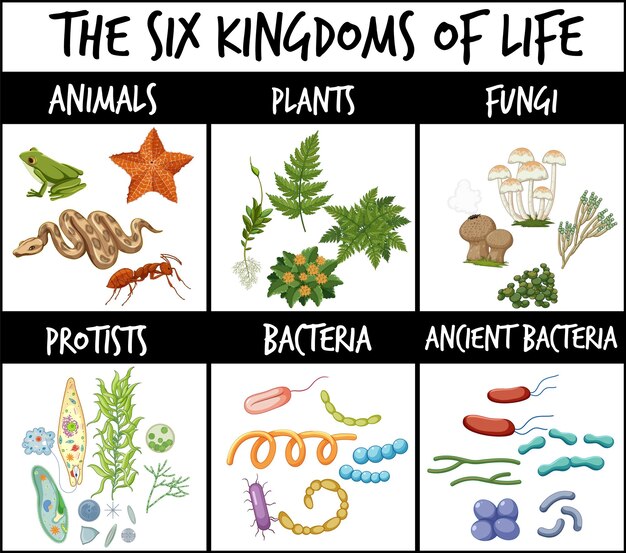

Fungi are not plants, they belong to their own kingdom called Fungi.
There are over 100,000 known species of fungi, but scientists estimate that there may be as many as 1.5 million species.
Fungi can be found in almost every environment on Earth, including extreme environments like deserts and Antarctica.
The main body of a fungus is called mycelium, which is made up of thread-like structures called hyphae.
Some fungi can grow to enormous sizes, like the giant honey fungus in Oregon that covers an area of 2,384 acres.
Fungi play a crucial role in decomposition, breaking down organic matter and recycling nutrients back into the ecosystem.
Mushrooms are the reproductive structures of fungi, designed to spread spores for reproduction.
Fungi have been used in the production of various food and beverages for centuries, such as bread, beer, and cheese.
Penicillin, one of the first antibiotics, is derived from a fungus called Penicillium.
Fungi can form symbiotic relationships with other organisms, such as mycorrhizal fungi that live in the roots of plants and help them absorb nutrients.
Fungi can also form mutually beneficial relationships with algae, creating lichens.
Fungi have the ability to break down toxic compounds, making them useful in environmental cleanup efforts.
Some types of fungi are bioluminescent, meaning they can glow in the dark.
Fungi can reproduce both sexually and asexually, using spores to spread and colonize new areas.
Fungi are the primary decomposers in forest ecosystems, breaking down dead wood and leaves.
Fungi can have medicinal properties, with some species being used in traditional medicine for their antibacterial and anti-inflammatory effects.
Yeast is a type of single-celled fungus used in baking and brewing.
Fungi have a unique cell wall made of chitin, which is different from the cell walls of plants and bacteria.
Fungal infections are common in humans and animals, ranging from minor skin infections to life-threatening systemic infections.
Mycophobia is the fear of fungi or mushrooms.
Fungi have been used as natural dyes for thousands of years, providing vibrant colors for fabrics and artwork.
Cordyceps, a type of parasitic fungus, has the ability to control the behavior of insects, turning them into zombies.
Fungi can form intricate and beautiful structures, like the fairy rings seen in grasslands.
Fungi have been used in the production of biofuels, such as ethanol.
Truffles, a type of underground fungus, are considered a gourmet delicacy and can be very expensive.
Some types of fungi produce toxins, such as the deadly Amanita phalloides, also known as the Death Cap mushroom.
Fungi are important for the carbon cycle, helping to break down organic matter and release carbon dioxide back into the atmosphere.
Alexander Fleming discovered penicillin from a fungus that contaminated his Petri dishes.
Fungi can grow on almost any organic material, including wood, soil, and even plastics.
Some fungi produce antibiotics to defend themselves against bacteria and other microorganisms.
Some fungi have the ability to survive extreme temperatures, such as the black fungus found in the Chernobyl nuclear reactor.
Fungal spores can be transported over long distances by wind or water, allowing them to colonize new areas.
Fungi are being studied for their potential use in bioremediation, as they have the ability to break down pollutants and toxins.
Some fungi have unique adaptations, like the ink cap mushroom that auto-digests itself after releasing spores.
Fungi have been used in traditional rituals and ceremonies by various cultures around the world.
The study of fungi is called mycology.
Some species of fungi are bioluminescent, illuminating the forest floor at night.
Fungi can produce enzymes that break down complex molecules, making them useful in various industries, such as food processing and waste management.
Some types of fungi are used in the production of pharmaceutical drugs, including immunosuppressants and cholesterol-lowering medications.
Fungi have a wide range of shapes and sizes, from microscopic yeast cells to large, branched structures like the mushroom.
Fungi are essential for the health and survival of many plant species, forming symbiotic relationships that provide nutrients and protection.
Some fungi have psychedelic properties and have been used in traditional rituals for spiritual and recreational purposes.
Fungi have been used in the production of biodegradable packaging materials, offering a sustainable alternative to plastic.
Fungi can be found in some of the most iconic habitats on Earth, like the rainforests and coral reefs.
Fungi have been used in the production of biopesticides, offering environmentally friendly alternatives to conventional chemical pesticides.
Around the world, coffee enthusiasts enjoy Monin coffee concentrate since it is a multipurpose product. Conveniently combining…
The Importance of Choosing the Right Shower for Your Bathroom Renovating your bathroom can be…
Usain Bolt holds the record for the fastest 100-meter sprint in history.Bolt was named Sportsman…
Love is in the air... and it smells suspiciously like chocolate!Roses are red, violets are…
Life's a beach, take a picture and relax.Sun, sand, and salty kisses. That's what beach…
Hungary is home to the largest thermal water cave system in the world.The Rubik's Cube…